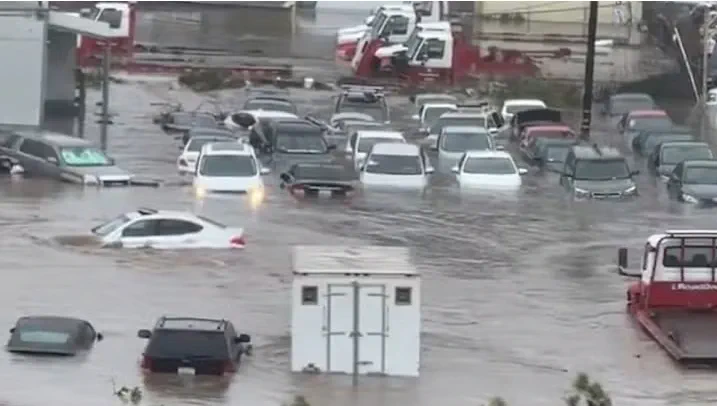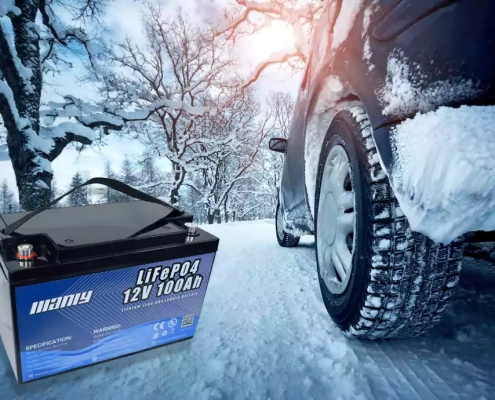Protect Your Lithium Ion Battery from Floodwaters
Table of Contents
Introduction
In recent weeks, San Diego has been grappling with an unprecedented natural disaster. The city, known for its picturesque beaches and sunny skies, faced a powerful storm system that left a trail of destruction in its wake. This storm, marked by torrential rains and overwhelming floodwaters, submerged large swathes of the area, disrupting lives and infrastructure.
As the floodwaters recede, the extent of the devastation is becoming evident. Communities across San Diego County, including the neighborhoods of Mountain View, Shelltown, and Southcrest, have been severely impacted. Homes are drenched, cars are displaced, and the landscape is altered by the force of nature. The inundation of several feet of water, particularly along key highways such as Interstate 15, has not only caused immediate distress but also poses long-term challenges for the recovery process.
In the face of this calamity, the resilience of San Diegans is being tested. The aftermath of the storm reveals not just physical damage but also the emotional toll on the residents. Amidst this scenario, an often-overlooked aspect is the impact on modern technology, particularly on devices powered by lithium-ion batteries. As a lithium-ion battery expert, I delve into the nuances of how such floods affect these ubiquitous power sources in our devices and vehicles, offering insights and guidance on navigating these challenges.
As we unfold the layers of this disaster, it becomes crucial to understand the vulnerabilities and the steps we can take to mitigate the risks, particularly concerning our reliance on lithium-ion batteries. This chapter aims to shed light on these aspects, providing a comprehensive overview of the challenges and solutions in the wake of the San Diego flooding.

Understanding Lithium-ion Batteries
As San Diego grapples with the aftermath of recent flooding, understanding the resilience of lithium-ion batteries, which power our daily lives, becomes crucial. These batteries, found in devices from smartphones to electric cars, are praised for their lightweight design, high energy density, and rechargeability.
The Anatomy of Lithium-Ion Batteries At their core, lithium-ion batteries consist of an anode, cathode, separator, electrolyte, and current collectors. This structure facilitates the movement of lithium ions, generating electrical current for powering various devices. The intricate process of charging and discharging, which involves the transfer of these ions between the anode and cathode, is key to their functionality.
Energy Density and Power Density Two critical aspects of these batteries are energy density and power density. Energy density measures the amount of energy a battery can store relative to its mass, akin to the volume of water in a pool. Power density, conversely, refers to how quickly this energy can be delivered, similar to how fast the pool can be drained.
In the context of floodwater exposure, understanding these properties is vital. The interaction between floodwaters and the internal components of lithium-ion batteries can lead to potential risks, including short circuits or reduced efficiency.
Impact of Floodwaters on Lithium-ion Batteries
In this chapter, we delve into the specific risks associated with lithium-ion batteries in electric vehicles (EVs) when exposed to flood conditions, as witnessed in the recent San Diego flooding.
The Dangers of Water-Damaged EV Batteries When EVs are submerged in floodwaters, especially those containing contaminants or salt, there’s a significant risk of short-circuiting. This is often due to the intrusion of water into the battery system. A short circuit in a damaged battery can trigger a dangerous phenomenon known as “thermal runaway.” This process involves a cell discharging energy rapidly, generating heat that propagates to adjacent cells, potentially leading to a fire.
The Cascade of Thermal Runaway The heat from a thermal runaway can compromise the battery’s internal structure, particularly melting the porous membrane between the cathode and anode. This damage can cause cells to vent flammable gas, escalating the risk of ignition. Additionally, the transfer of heat between cells can create a chain reaction, further exacerbating the situation.
Stranded Energy: A Hidden Hazard A critical concern in damaged lithium-ion batteries is what experts term “stranded energy” — residual energy in a damaged battery pack. This energy, if released suddenly, can initiate thermal runaway or cause the venting of flammable gases, leading to ignition.
Emergency Handling of Water-Damaged Lithium-ion Batteries
In the context of incidents like the San Diego flooding, managing water-damaged lithium-ion batteries in electric vehicles (EVs) requires careful attention. This chapter expands on the steps and considerations for such scenarios.
- Immediate Actions Post-Exposure:
- Avoid charging the battery right after exposure to water.
- Dry the battery thoroughly. This can be done by leaving the vehicle in a well-ventilated area or using gentle, indirect heat sources.
- Motor Controller Care:
- Assess the motor controller for water damage. If it’s wet, it should be carefully dried.
- Use a hairdryer on a low setting to gently dry out any moisture.
- Wrapping the controller in a protective film can help prevent future water intrusion.
- Battery Health Check:
- Inspect the battery casing for any signs of damage or water ingress.
- If the battery has been submerged, a professional evaluation is recommended to assess any potential internal damage.
- Safety Precautions During and After Flooding:
- Avoid driving through flooded areas. Water can cause significant damage to the electrical systems of an EV.
- If the vehicle has been in floodwater, have it inspected by a professional before using it again.
- Long-term Considerations:
- Regularly check the battery’s performance and health.
- Consider waterproofing measures for EVs, especially if residing in flood-prone areas.
- Dealing with Severe Damage:
- In cases of severe water damage, the battery might need to be professionally serviced or replaced.
- Safety is paramount; damaged batteries can pose fire risks and should be handled by experts.
Innovations and Solutions: The MANLY Battery Example
In this chapter, we discuss the resilience of lithium-ion batteries in the face of challenges posed by floodwater, integrating insights from the features of MANLY Battery.
- Advancements in Battery Technology:
- Highlighting the resilience of MANLY Batteries, which demonstrate enhanced safety features like short circuit protection and overcharge safeguards.
- Discussing the relevance of these features in flood situations, ensuring battery safety even in extreme conditions.
- Enhancing Flood Resilience:
- Emphasizing the need for batteries that can withstand environmental stressors, as evidenced by the recent San Diego flooding.
- MANLY’s approach to battery construction, which might include water-resistant designs and materials, aligns with the need for more durable and safe battery solutions.
- Preparing for the Future:
- Considering the role of efficient energy storage solutions in mitigating the effects of climate change.
- The potential for innovative designs like MANLY’s in contributing to a more sustainable and resilient future.
- Consumer Awareness and Adaptation:
- Educating consumers on the importance of choosing batteries with high safety standards for flood-prone areas.
- Understanding the capabilities and limitations of lithium-ion batteries, like those offered by MANLY, in challenging weather conditions.
Conclusion
As we reflect on the recent San Diego flooding, it’s clear that the resilience of lithium-ion batteries against environmental challenges like floodwater is more critical than ever. The discussions in this article, from understanding the technology to exploring innovative solutions like those offered by MANLY Battery, emphasize the need for preparedness and adaptation in the face of climate change.
The journey through this topic has highlighted the importance of awareness, technological advancement, and safety practices. Whether for individual consumers or larger communities, the message is clear: proactive measures and informed choices are key to navigating a future where such environmental events may become more frequent.





